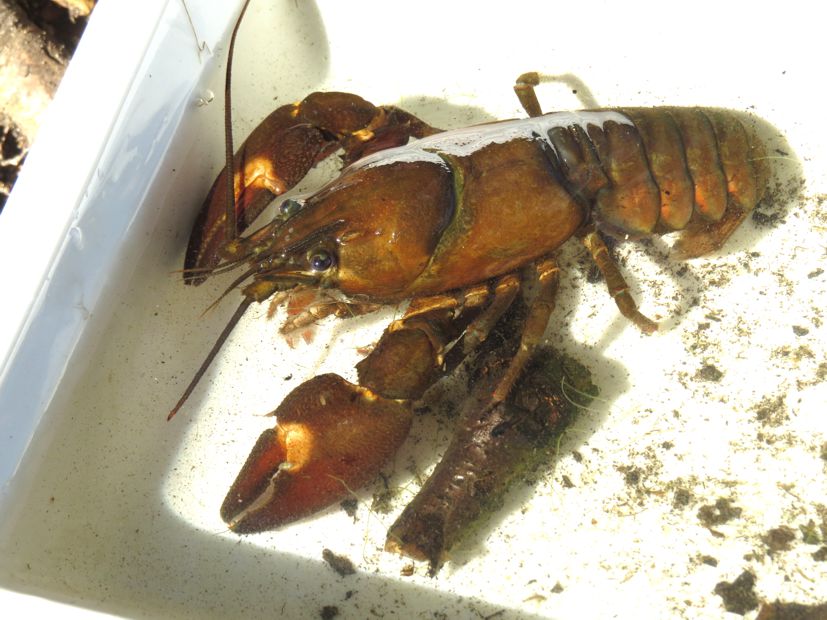
As of 22nd October, the species list for the 5th October bio-blitz in Wanstead Park stands at 148, excluding plants and lichens. Probably the most popular activity on the day was the pond-dipping, organised by Derek McEwan. Derek almost had to be dragged away from the east end of Perch Pond, where he set up base, such was his enthusiasm for discovering what was in the waters of that lake. Derek’s species summary makes fascinating reading. Summarising, he found:
- 3 species of freshwater leech (subclass Hirudinea).
- 1 species of horsehair worm (phylum Nematomorpha).
- 12 species of molluscs, including a variety of freshwater snails and mussels.
- 2 species of crustaceans, the most dramatic of which was a large American Signal Crayfish.
- 1 species of true fly (order Diptera).
- 9 species of water bugs, the most common being Greater Water-Boatman, and with four species of Lesser Water-Boatman.
- 6 species of water beetle, including the fascinating Screech Beetle (Hygrobia hermanni), which let out an audible squeak when touched.
- 6 dragonfly and damselfly species, including the larvae of Common Blue Damselfly and Red-eyed Damselfly; there was also a very late flying Black-tailed Skimmer.
- 2 fish species, Perch and Roach.
Derek commented: “It’s always dangerous to make assumptions based on just one set of data, but there are some interesting general trends. There seems to be a very good variety of freshwater molluscs in the Perch Pond, especially water snails and bivalves. Crustaceans, including shrimps, water slaters and Signal Crayfish, are also plentiful. On the other hand there were no caddis, alder or may-fly larvae, and very few Odonata larvae – even in the littoral zone at the margins of the pond. This is despite the pond-dipping always being attended by several flying adults e.g. Migrant Hawkers and Common Darters. There were also very few predatory water beetles with just one specimen of Acilius sulcatus and no Dysticus or Agabus species. I’m not sure if it’s because of the late time of year, or if the numbers of predatory fish are having an impact and the larger, more conspicuous beetles are not having the chance to reach maturity. It’s also possible that the algal blooms may be having an impact, but there’s enough clear surface water that I think it’s a little unlikely. The scarcity of Lesser Water-Boatmen (Family Corixidae) was also surprising, with just a few individuals found during the day. Although well-represented, there were also fewer Greater Water-Boatmen (Notonecta glauca) than I had expected and just a single Hesperocorixid and Water Scorpion (Nepa cineria). Again, I would have expected to find more in a lake of this size/water depth. Further studies should help – it would be especially interesting to compare the Perch Pond with the other lakes in the Park like the Shoulder of Mutton Pond, to see how water quality/invertebrate life varies across the site.”
The Wren Group is preparing plans to do more bio-blitzes in 2015. Watch this space!